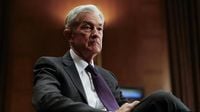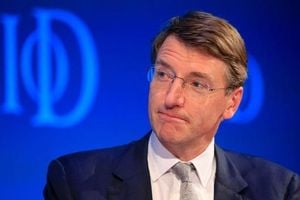On Wednesday, September 17, 2025, the Federal Reserve is poised to announce its first interest rate cut in nine months, a move that has economists, investors, and political observers all holding their breath. With the central bank widely expected to lower its key rate by a quarter-point to a range of 4% to 4.25%, the decision comes at a pivotal moment for the U.S. economy—and not without controversy or consequence.
For months, the Fed, led by Chair Jerome Powell, has faced mounting pressure from multiple fronts. The most visible of these has been the White House, where President Donald Trump has not been shy about expressing his dissatisfaction with the central bank’s pace and direction. Trump has spent much of this year publicly lambasting Powell, at one point calling him “a real dummy” and demanding much deeper cuts, declaring on social media, “Too Late. MUST CUT INTEREST RATES, NOW, AND BIGGER THAN HE HAD IN MIND. HOUSING WILL SOAR!!!” according to BBC reporting. Trump’s calls for rates as low as 1% have been echoed in his administration’s actions, including the recent installation of Stephen Miran, the chairman of his Council of Economic Advisers, as a new member of the Fed’s governing board just days before this week’s meeting, as reported by NPR and CNBC.
Yet, despite the political fireworks, analysts across outlets like NPR and BBC agree that the Fed’s decision is being driven more by shifts in economic fundamentals than by presidential jawboning. The U.S. labor market, once the bedrock of the Fed’s confidence, has shown unmistakable signs of weakness. In August, employers added just 22,000 jobs—a disappointing figure that follows a loss of 13,000 jobs in June, the first monthly decline since 2020. These numbers are a far cry from the 1.4 million jobs added in the first eight months of 2024, with only 598,000 added so far in 2025, according to CNBC. The unemployment rate has ticked up to 4.3%, a level not seen since September 2017 outside the pandemic era. The government also revised its estimate of job gains for the year ended March 2025 downward by a staggering 911,000 positions, a move described by Talley Leger, chief market strategist at the Wealth Consulting Group, as a “huge downgrade.”
“If that doesn’t light a fire under the Fed just from an economic perspective I don’t know what will,” Leger told the Associated Press. The sentiment is echoed by others in the financial sector. Sarah House, a senior economist at Wells Fargo, remarked to BBC, “The Fed knows that when the labour market turns, it turns very quickly, so they’re wanting to make sure they’re not stepping on the brakes of the economy at the same time the labour market has already slowed.”
But the Fed’s calculus is complicated by another persistent adversary: inflation. After peaking in the aftermath of the pandemic, inflation rates have cooled but remain stubbornly above the central bank’s 2% target. In August, prices rose 2.9% from a year earlier, up from 2.7% the previous month, according to government data cited by BBC and CNBC. This uptick is partly attributed to the Trump administration’s sweeping tariffs, which have driven up costs for goods such as furniture, appliances, coffee, and clothing. Joseph Gagnon, a senior fellow at the Peterson Institute for International Economics, warned, “Price pressures are likely to pick up in coming months as businesses are forced to pass on higher tariff costs to protect their profit margins.”
The Fed’s primary rate had been set at 4.25% to 4.50% prior to the anticipated cut. Most economists expect this week’s move to be the first in a series, with Wall Street traders pricing in three cuts this year and two more by next June, potentially bringing the rate down to just above 3%—a level thought to neither stimulate nor slow the economy. Powell himself has described the current moment as a “recalibration” rather than an emergency, telling central bankers in Jackson Hole last month, “While the labor market appears to be in balance, it is a curious kind of balance that results from a marked slowing in both the supply of and demand for workers. This unusual situation suggests that downside risks to employment are rising. And if those risks materialize, they can do so quickly in the form of sharply higher layoffs and rising unemployment.”
Despite the urgency, there is a camp of economists who remain skeptical about the wisdom of cutting rates while inflation is still above target and stock markets are at or near all-time highs. As Michael Feroli, chief U.S. economist at JPMorgan Chase, observed, “It’s not unprecedented for the Fed to ease when stocks are at or near all-time highs. It’s rarer when stocks are at the highs and inflation is above target and inflecting higher.”
The Fed’s upcoming decision is also notable for its institutional implications. The Trump administration’s efforts to influence the central bank have sparked concerns about the Fed’s independence. In addition to Miran’s appointment, the administration attempted to fire Lisa Cook, the first Black woman to serve on the Fed’s board, over allegations of mortgage fraud—allegations that have not resulted in any criminal charges, as CNBC reports. Cook’s dismissal has been temporarily blocked by federal courts while she sues the administration, but the White House has said it will ask the Supreme Court to allow the firing to go forward. If Trump succeeds, his appointees would hold a majority on the Fed’s seven-member board, a scenario that longtime Fed watchers warn could “seriously compromise the central bank’s ability to make tough decisions on interest rates free from the short-term political demands of the White House,” according to NPR.
Amid this swirl of economic and political drama, the real-world stakes are high. Lower interest rates could make it cheaper for businesses to borrow and invest, potentially helping to stem the slowdown in hiring. For consumers, it could mean relief on credit card and mortgage rates. But with inflation still lurking and the policy environment fraught with unusual political interference, the Fed’s path forward is anything but clear.
As the central bank prepares to release its quarterly economic projections alongside the rate decision, many economists forecast that officials will signal three total reductions this year and at least two more in 2026. The delicate balance between supporting a faltering labor market and keeping inflation in check will define not just this week’s meeting, but the economic landscape for months to come. The eyes of Wall Street, Main Street, and Pennsylvania Avenue are all fixed on the Fed, waiting to see just how deep—and how fast—the cuts will go.
For now, the Fed’s move is best described, in Powell’s words, as a recalibration. But with so much at stake, every quarter-point will be scrutinized for what it signals about the future of the American economy—and the independence of its most powerful financial institution.





